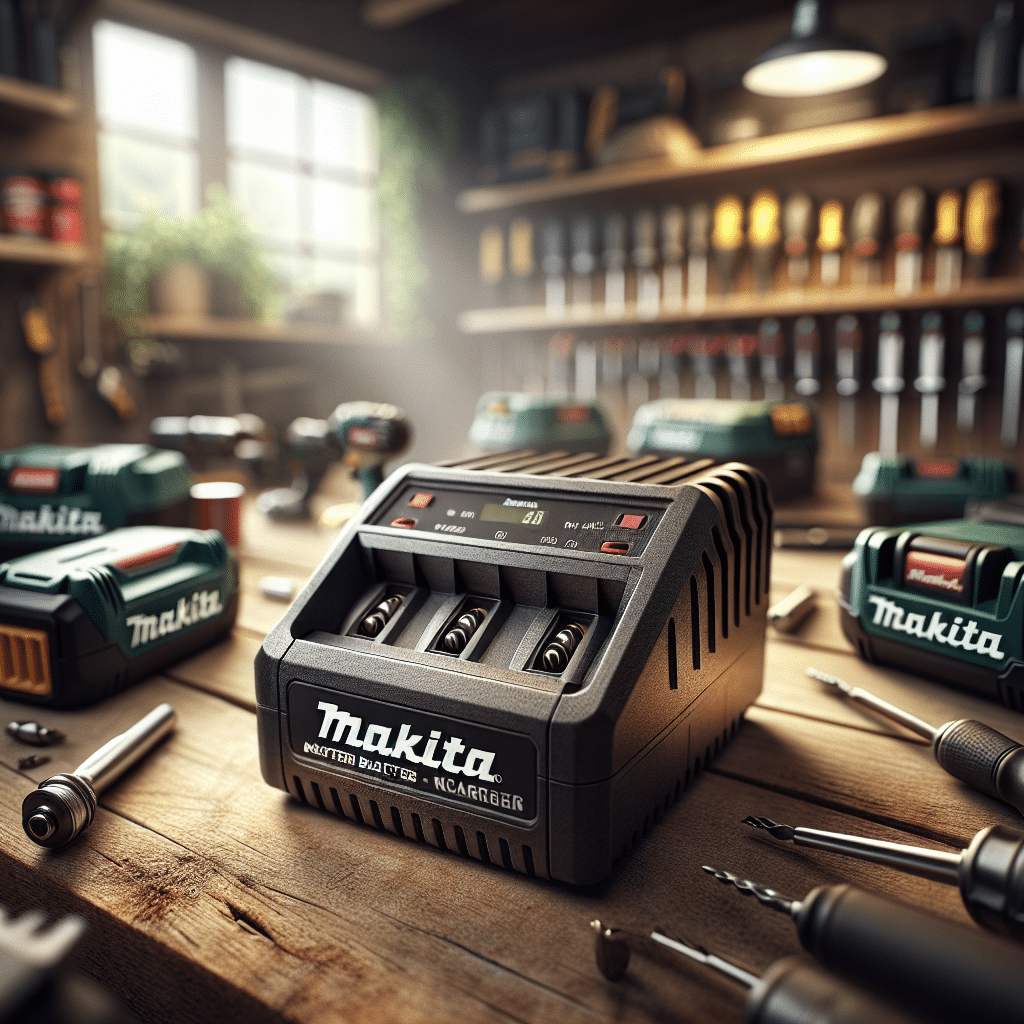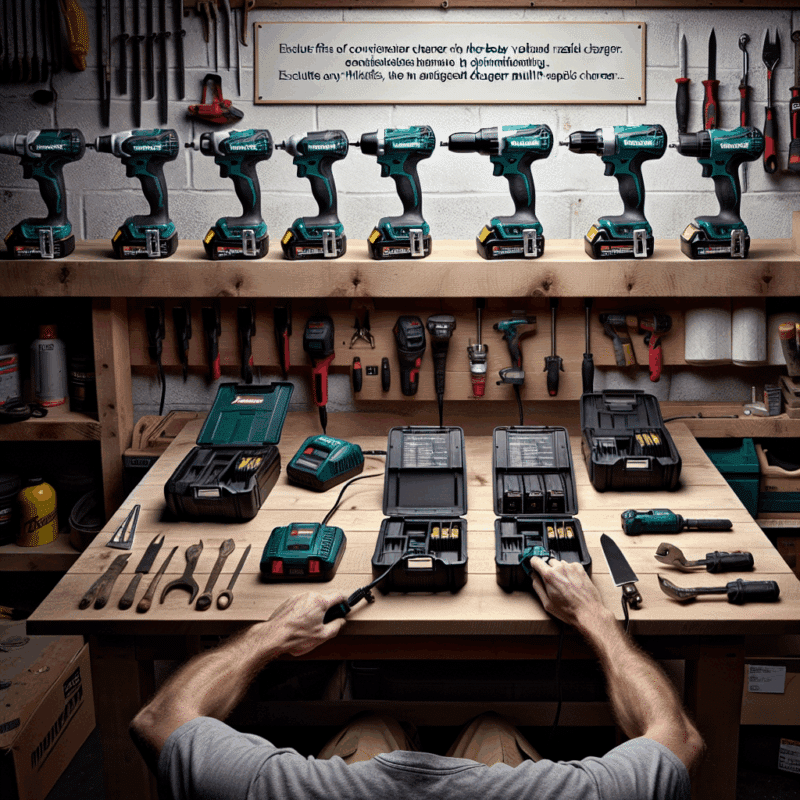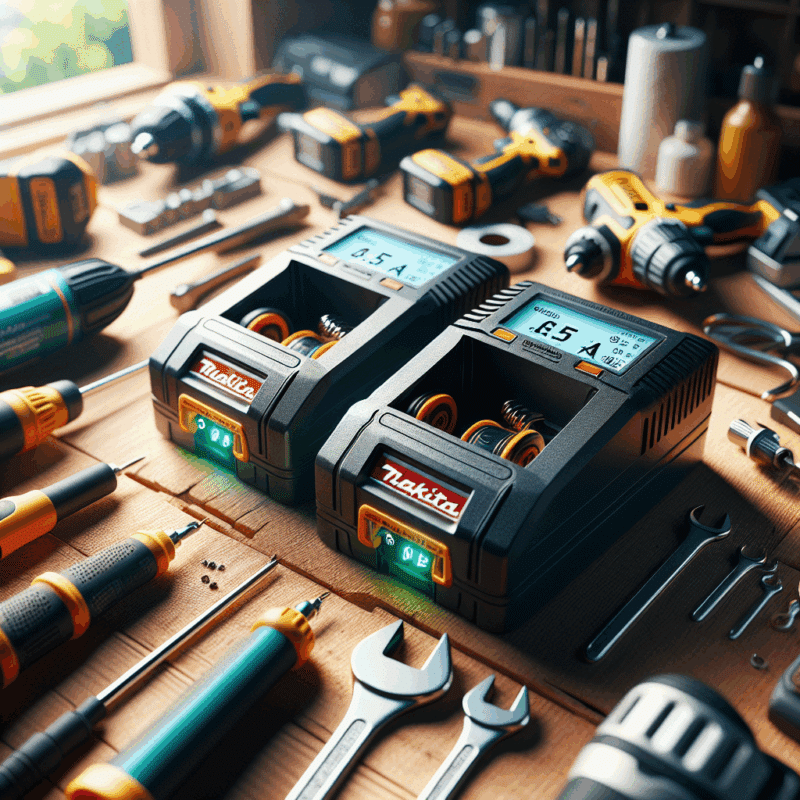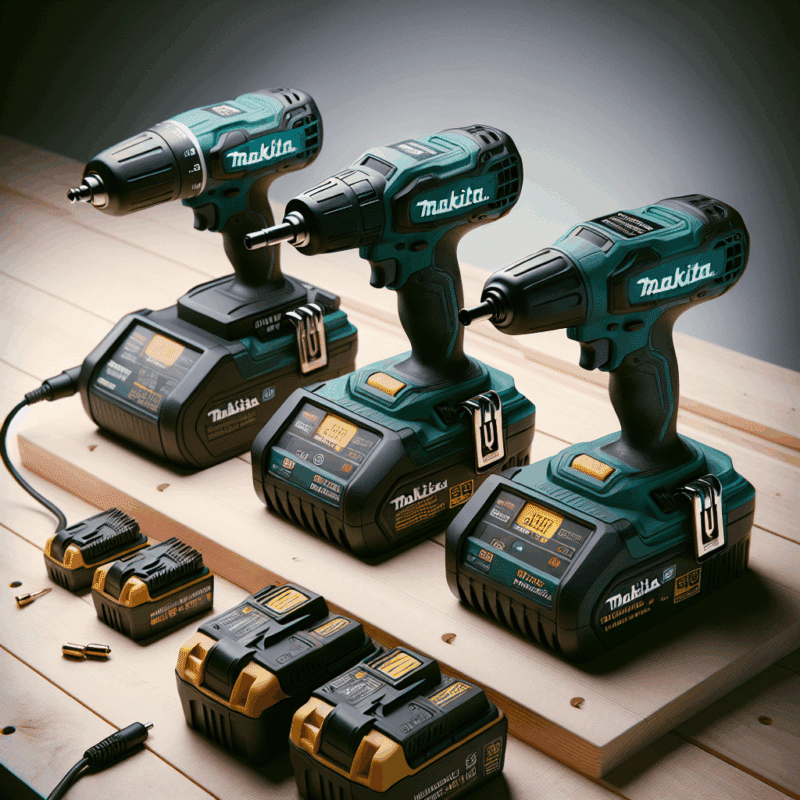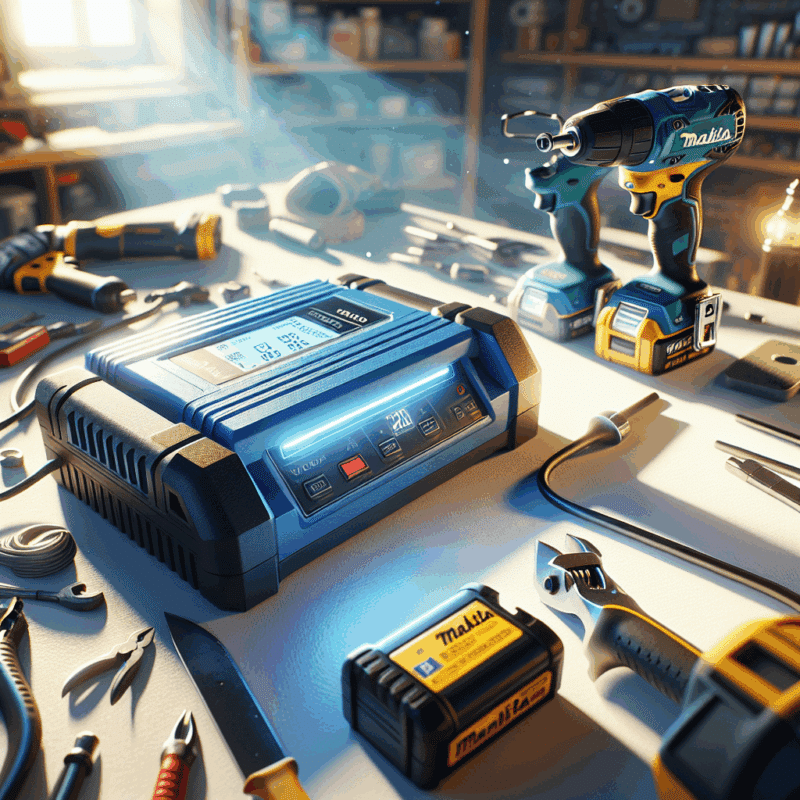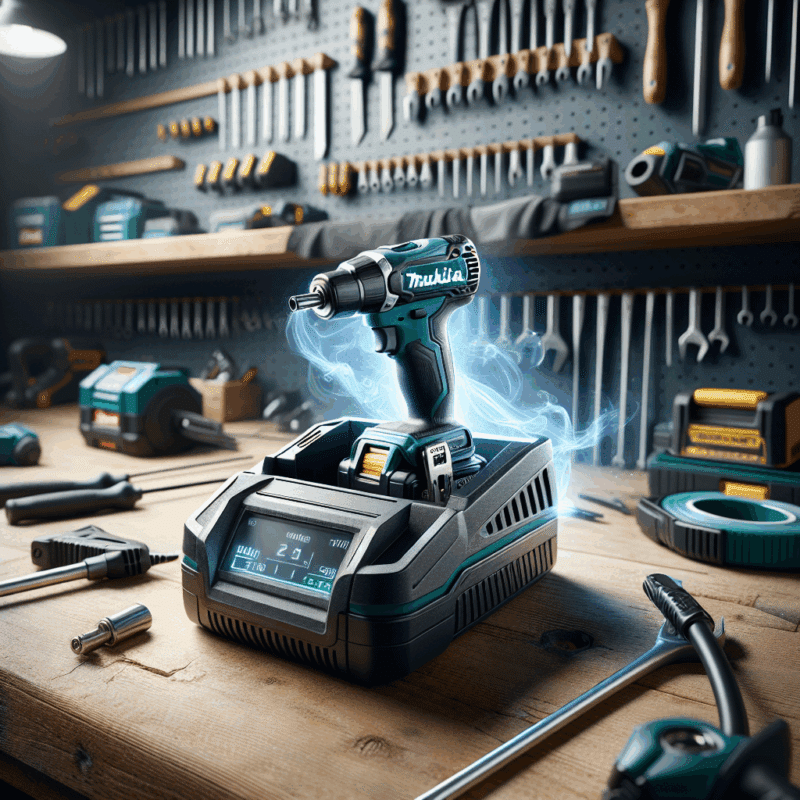Is It Time to Retire Your Makita DC18RC? Full Performance Review
In This Article
- ✅ DC18RC still charges 3.0Ah batteries in under 25 minutes.
- ✅ Modern chargers offer dual ports and advanced diagnostics.
- ✅ Watch for signs of wear like extended charge times and overheating.
- ✅ Third-party chargers can work — if certified.
- ✅ Torxup VoltGuard 6500 offers serious upgrade potential.
Overview of the Makita DC18RC
What Makes the DC18RC Popular?
The Makita DC18RC review begins with understanding why this battery charger remains a staple in many workshops. Released as part of Makita’s LXT range, the DC18RC rapidly rose in popularity due to its fast charge times, compact form, and intelligent cooling system. Designed to charge lithium-ion batteries between 14.4V and 18V, it specifically caters to Makita’s suite of cordless tools, making it a key component in professional toolkits alike.
This charger utilises Active 3 Controls — technology that monitors current, voltage and temperature during charging. The benefit? Batteries charge faster while being protected from overheating or overcharging damage. Thanks to fan-assisted cooling, it reduces battery heat during charge cycles, significantly prolonging battery life overall.
What really set the DC18RC apart when it launched was its ability to fully charge a 3.0Ah battery in just 22 minutes. At the time, this was a substantial leap forward in productivity. Numerous users still trust this charger today due to its stability, longevity and brand reliability.
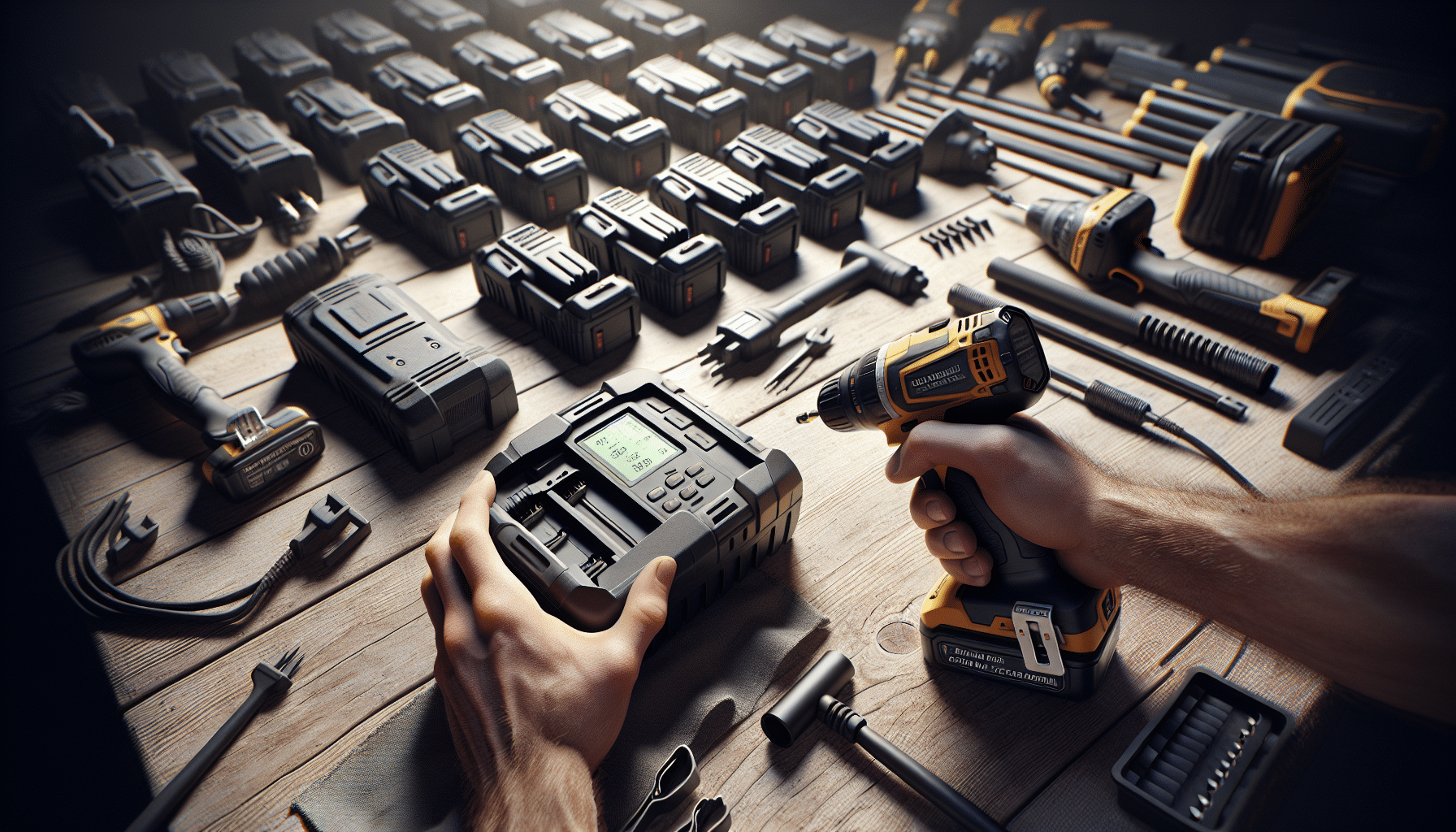
Charging Speed and Efficiency
Is the DC18RC Still Fast Enough in 2024?
As we step into 2024, the question most seasoned Makita users ask is: is the DC18RC still fast enough? Truth be told, its 22-minute charging capacity for a 3.0Ah battery still holds its ground against many replacements. However, with Makita and third-party manufacturers pushing the boundaries on high-amperage batteries, the game has changed.
Modern Makita batteries, such as the 6.0Ah BL1860B, can still be charged using the DC18RC, but charge times now rise to around 55 minutes. While still respectable, newer models such as the DC18RD or even multi-port charging stations can cut that time more effectively, especially in high-output settings like commercial workshops or intensive trade jobs.
Despite developments, the DC18RC remains efficient because of its simplicity. There are no over-complications — just dependable, streamlined charging power that rarely fails. So, for most tradespeople and DIYers, the charger continues to serve its purpose well — although not always optimally.
Signs You May Need an Upgrade
Performance Red Flags to Watch
If you’re considering whether an upgrade is necessary, a few red flags should guide your decision. One key indicator is prolonged charge times. Have you noticed your batteries taking noticeably longer to reach full charge, even though the charger appears functional? This likely means wear on the internal components.
Secondly, increased heat is a warning sign. The DC18RC is known for its cooling fan which helps maintain safe battery temperatures. If batteries come out very hot or the fan seems louder than usual—or absent entirely—this might indicate a malfunction or declining performance.
Another red flag is inconsistent charging patterns. If your charger is starting and stopping erratically or failing to complete full charges, you’re not only losing valuable work time but also endangering the lifespan of your batteries. These are not isolated issues. They speak volumes about ageing components that no longer function at peak efficiency.
For professionals relying on this charger throughout the workday, these performance issues can easily lead to productivity loss. That’s when it’s time to reflect on whether an upgrade can streamline your workflow — and safeguard your investment in Makita tools.
Comparing DC18RC with Modern Alternatives
Speed, Safety, and Battery Protection
When comparing the DC18RC to its modern alternatives, three core areas emerge: speed, safety, and smart protection technologies.
Newer Makita chargers, such as the <a href="Learn more about Makita Battery Charger Reviews & Comparisons“>DC18RD dual-port charger, outpace the DC18RC in raw speed. Charging two 18V LXT Lithium-Ion batteries simultaneously in roughly the same time it takes the DC18RC to charge one is an efficiency boost worth noting.
Safety is another domain where newer models build upon the DC18RC’s already reputable safety features by incorporating even more advanced diagnostics. Enhanced microprocessor controls monitor voltage irregularities in real-time and suspend charging automatically if instability is detected.
Battery protection has also evolved. Some new chargers now implement advanced air injection cooling and USB connectivity for firmware updates, extending both versatility and battery lifespan. While the DC18RC was advanced for its time, today’s chargers push the envelope further — and for professionals, that added precision and adaptability can matter significantly in day-to-day usage.
Third-Party Chargers: Are They Safe?
Understanding Compatibility and Certification
The question of utilising third-party chargers remains contentious. Is it safe to use a non-Makita charger for your prized LXT batteries? Technically, some aftermarket options are certified to meet CE and RoHS compliance standards. However, safety comes down to build quality, smart technology, and manufacturer reputation.
Some third-party chargers can offer faster charge times and universal compatibility with multiple tool brands. On the other hand, many budget clones lack proper active monitoring, leading to risk factors such as overcharging, overheating, or even short-circuiting.
Always confirm the charger provides essential features: thermal control, auto shutoff, and fan-assisted cooling. If not, you run the risk of voiding battery warranties or—worse—damaging your tools entirely. If you explore third-party routes, select those audited by external bodies or reviewed by professionals. You might also consider the safer path with trusted names such as Torxup.
The Torxup VoltGuard 6500 as a Replacement
Why It’s a Strong Contender
One noteworthy contender to the DC18RC is the <a href="Comprehensive guide to Makita battery chargers“>Torxup VoltGuard 6500. Known for its universal compatibility with various 14.4V – 18V lithium-ion batteries (including Makita), its robust feature set includes active heat dissipation systems, a digital LCD display, and a smart diagnostics module.
The LCD readout provides real-time charging metrics including input voltage, battery temperature, and charging progress. This level of transparency can significantly reduce unexpected failures or performance lags. The VoltGuard 6500 also supports dual-charging functionality, handling two batteries with sector-specific smart load distribution.
Although not an official Makita product, it’s CE-certified and constructed with industrial-grade components. Add in a built-in cooling fan optimised for high-cycle environments, and it emerges as a serious alternative for demanding users looking for modern charger upgrades.
Common Questions From Longtime Users
Tech Support Insights
For users who’ve owned a DC18RC for years, some common questions arise. “Can this charger handle the latest 6.0Ah batteries?” The answer is yes — albeit with extended charge times. “Is it compatible with G-Series Makita batteries?” Unfortunately not. The DC18RC is designed solely for LXT battery platforms and will not charge G-series units.
Other questions centre around error lights. If you’re seeing frequent blinking red or red/green alternating lights, it usually indicates battery malfunction or thermal issues. Often, this can be corrected by cleaning contacts and ensuring the cooling fan is operational.
If you’re uncertain, customer support still recommends updating firmware — possible in some smart aftermarket chargers but not on the DC18RC itself. That places owners on a slight disadvantage compared to those with newer, software-upgradable models.
Our team has routinely seen chargers last upwards of seven years with minimal maintenance. But occasional calibration and dust removal can go a long way to keeping performance in peak condition.
Workshop Efficiency Gains After Switching
Speed, Output, and Practical Benefits
Professionals who have upgraded from the DC18RC often report immediate efficiency gains. Imagine halving your collective toolset charging time by deploying a unit like the DC18RD, or having full visibility on charge diagnostics via LCD interfaces on third-party alternatives. These aren’t just bells and whistles — they equate to more tools, charged and ready, within tight jobsite windows.
Some teams have reported up to 25% increase in tool availability by upgrading to dual charging systems. When time equals money — particularly in commercial contracts — that additional optimisation can transform reliability into profitability.
Additionally, smarter systems allow for battery scheduling and staged charging queues. These enhancements lend themselves well to more refined workshop operations and mitigate risks like overdrawn power sockets or overheating transformer units.
How to Choose the Right Charger for Your Needs
Buyer’s Checklist
Before making the switch, it’s important to consider your charging priorities. Here is a simple checklist for selecting the ideal charger.
- ✔ Battery Compatibility: Must support 14.4–18V LXT batteries.
- ✔ Charge Port Count: Do you need dual ports for greater throughput?
- ✔ Diagnostics: Consider an LCD interface for real-time feedback.
- ✔ Certifications: Look for RoHS and CE compliance.
- ✔ Smart Features: Auto shut-off, fan cooling and thermal protection are vital.
- ✔ Physical Size: Will it fit cleanly into your existing workshop workflow?
A good charger isn’t only about speed but reliability across long-term usage. Choose a model tailored to your tool volume and daily cycle count. If you’re still unsure, read our guide on <a href="Read a related article“>best Makita charger upgrades to explore modern options.
Final Thoughts: Stick With or Upgrade?
Balancing Cost vs. Performance
Deciding whether to upgrade from your faithful DC18RC hinges on evaluating usage patterns. If you’re a casual DIYer who charges one battery per session, your current unit may still be perfect. However, if you’re a contractor juggling multiple tools across the day, the inefficiencies of single-bay and non-diagnostics charging present a clear bottleneck.
From a cost perspective, upgrading to an advanced multi-port charger or a Torxup equivalent is a worthwhile investment. It provides speed, safety and futureproofing. But for some, the DC18RC remains a dependable workhorse. Ultimately, the answer lies not just in features, but in how those features align with your productivity goals and tool rotation expectations.
“The DC18RC is dependable, but switching to a smarter charger drastically improved my team’s workflow.” — UK Electrician, 2024
Key Takeaways
The Makita DC18RC remains one of the most respected chargers on the market. But advancements in charging tech mean alternatives may offer more value depending on your needs. Whether you stay loyal to the DC18RC or invest in a next-gen unit, understanding your demands is key to maximising productivity.
Great guide on makita-dc18rc-performance-when-to-upgrade – Community Feedback
Is the Makita DC18RC still the best for fast charging?
While the DC18RC delivers reliable rapid charging, recent alternatives now offer even faster and smarter features. For heavy users or larger battery packs, an upgrade could improve workshop efficiency and battery health.
How do I know if my DC18RC needs replacing?
You should consider replacing your DC18RC if charging times noticeably increase, the unit overheats, fails to fully charge batteries, or displays error lights repeatedly despite healthy batteries.
Are third-party Makita chargers a safe alternative?
Select third-party Makita-compatible chargers that meet CE certification and safety standards. Trusted models can offer speed and advanced features, but always avoid uncertified or suspiciously cheap options for safety and warranty reasons.

